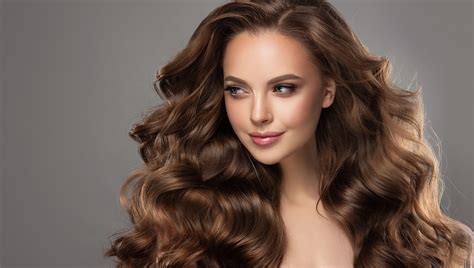Introduction
Hair is an integral part of our appearance and plays a significant role in our overall health and well-being. According to the American Academy of Dermatology, over 80% of Americans consider healthy hair to be important for their self-esteem and confidence. However, achieving and maintaining healthy hair can be a challenging task, especially considering the myriad of environmental factors, lifestyle choices, and genetics that can affect it. This comprehensive guide will delve into the science behind hair health, provide practical strategies for achieving and maintaining beautiful tresses, and explore innovative approaches to hair care.

The Science of Hair Health
Understanding the basic structure and function of hair is key to developing effective hair care routines. Hair consists primarily of a protein called keratin, which forms strong fibers that give it its strength and elasticity. The outermost layer of hair is called the cuticle, which protects the inner layers from damage.
Hair growth occurs in cycles that consist of three phases: anagen, catagen, and telogen. The anagen phase is the active growth phase, which typically lasts for 2-8 years. The catagen phase is a transitional phase that lasts for about 2-3 weeks, during which the hair follicle shrinks and the hair shaft is pushed upwards. The telogen phase is the resting phase, which lasts for about 3-4 months, during which the hair follicle remains dormant and the hair shaft is shed.
Factors Affecting Hair Health
Numerous factors can impact the health and appearance of hair, including:
- Genetics: Hair type, texture, and growth patterns are largely determined by genetics.
- Hormones: Hormonal changes, such as those that occur during pregnancy or menopause, can affect hair growth and quality.
- Diet: A diet rich in essential nutrients, such as protein, iron, and vitamins B and C, is necessary for healthy hair growth.
- Lifestyle: Stress, smoking, and excessive alcohol consumption can all negatively impact hair health.
- Environmental Factors: Exposure to pollution, harsh weather conditions, and UV radiation can damage hair and lead to dryness, breakage, and褪色褪色.
Strategies for Healthy Hair
Maintaining healthy hair requires a comprehensive approach that addresses both internal and external factors. Here are some effective strategies:
Internal Strategies
- Consume a Nutrient-Rich Diet: Ensure adequate intake of protein, iron, vitamins B and C, and other essential nutrients for healthy hair growth.
- Manage Stress: Engage in stress-reducing activities such as yoga, meditation, or spending time in nature.
- Limit Alcohol and Smoking: Excessive alcohol consumption and smoking can damage hair follicles and impair hair growth.
External Strategies
- Use Gentle Hair Care Products: Opt for sulfate-free and paraben-free shampoos and conditioners that are designed for your specific hair type.
- Moisturize Regularly: Apply a leave-in conditioner or hair oil to replenish moisture and prevent dryness.
- Protect from Heat Styling: Limit the use of heat styling tools and always apply a heat protectant spray before using them.
- Avoid Chemical Treatments: Frequent chemical treatments, such as bleaching, coloring, and perming, can damage hair and make it more prone to breakage.
Innovative Approaches to Hair Care
In addition to traditional hair care practices, several innovative approaches have emerged that offer promising results for improving hair health.
- Nanotechnology: Nanoparticles can penetrate the hair shaft and deliver targeted treatments to specific areas of concern, such as damage or thinning.
- Bioinformatics: Bioinformatics techniques can be used to analyze genetic data and identify personalized hair care solutions.
- Microbiome Manipulation: The hair microbiome, which consists of microorganisms living on the scalp, plays a role in hair health. Research is exploring ways to manipulate the microbiome to improve hair growth and reduce hair loss.
Tables for Reference
Table 1: Essential Nutrients for Healthy Hair
| Nutrient | Recommended Daily Intake | Benefits |
|---|---|---|
| Protein | 46-56 grams (women), 56-63 grams (men) | Essential for hair growth and strength |
| Iron | 18 milligrams (women), 8 milligrams (men) | Prevents hair loss and improves hair quality |
| Vitamin B12 | 2.4 micrograms | Supports red blood cell production, which carries oxygen to hair follicles |
| Vitamin C | 75 milligrams (women), 90 milligrams (men) | Acts as an antioxidant and protects hair from damage |
| Biotin | 30 micrograms | Helps strengthen hair and prevent breakage |
Table 2: Hair Care Products by Hair Type
| Hair Type | Shampoo and Conditioner Type |
|---|---|
| Fine or Thin | Volumizing shampoo and conditioner |
| Normal | Moisturizing shampoo and conditioner |
| Dry | Hydrating shampoo and conditioner |
| Curly | Curl-defining shampoo and conditioner |
| Color-Treated | Color-protecting shampoo and conditioner |
Table 3: Heat Styling Tools and Their Effects
| Tool | Effects |
|---|---|
| Hair Dryer | Can cause dryness and damage if used too often or on high heat |
| Flat Iron | Can straighten hair but can also damage it if used incorrectly |
| Curling Iron | Can create curls but can also cause frizz if used on high heat |
| Hot Rollers | A gentler option for creating curls or volume |
Table 4: Innovative Hair Care Technologies
| Technology | Benefits |
|---|---|
| Nanotechnology | Delivers targeted treatments to specific areas of concern |
| Bioinformatics | Identifies personalized hair care solutions based on genetic data |
| Microbiome Manipulation | Improves hair health by manipulating the hair microbiome |
Conclusion
Achieving and maintaining healthy and beautiful hair requires a multifaceted approach that addresses both internal and external factors. By understanding the science behind hair health, adopting effective hair care strategies, and exploring innovative approaches, you can transform your tresses and embrace your love for healthy hair. Remember to consult with a healthcare professional or dermatologist for personalized advice and to address any underlying hair-related concerns.
